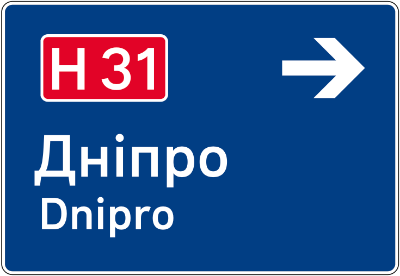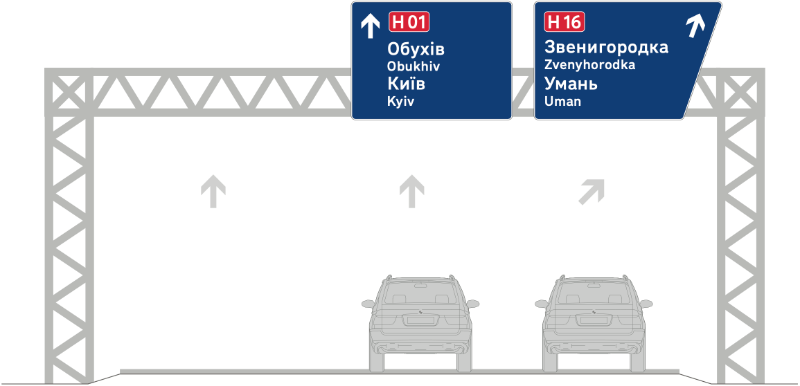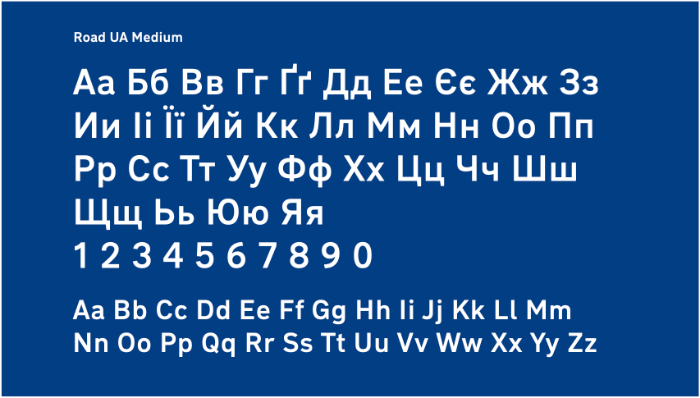Until recently Ukraine's extremely well designed new road signs were the only reason we had to think about the country. We think you'll like them too.
It's been a long time since this website covered international roads. We used to - many years ago - have pages looking at roads, signs and driving styles in different countries around the world and offering a comparison to how we do things in the UK. Today, we're introducing some international coverage again, just as a one off.
You'll have seen a lot about Ukraine in the news lately. Until last week, we hadn't thought much about the place since last summer, when their new system of road signs was unveiled and caught our eye because they were so good.
This is a country still shedding its Soviet past, and its road network is still heavily influenced by Soviet practice. Ukraine still lies on M-3, for example, a road numbered in the 1960s whose letter prefix marks it as radiating from Moscow, and its signs are solely in Cyrillic lettering, making them illegible to most international visitors from western Europe.
The Ukrainian Government wants to overhaul the system, to update its very basic set of designs to match best practice internationally, and to make them bilingual - offering a Latin alphabet transcription in smaller letters underneath each legend. Some signs will even carry a translation in English where the message is complicated.
Here's a very simple one, for example.

New colours are being introduced, with black-on-white for directions within a town, and white-on-brown for tourist signs.

Complex junctions, like cloverleafs, can be shown on advance signs. This one also indicates that another junction with a major road lies further ahead by using an "interchange" symbol.

Overhead signs for motorway-type roads are particularly nice, with angled panels for exits.

Here in the UK, we may choose to take it as a compliment that the new signs in Ukraine are the latest outing for Transport, the lettering that appears on our own road signs. It's already widely used around the world, and these designs now introduce a new slightly amended variant for text that appears in the Latin alphabet. Remarkably, the new font is open source - you can download it here.

There are also a range of special symbols, including ones for compass points and airports, and - bizarrely - the infinity symbol. It's not clear what that might be used for but it probably won't be a speed limit.

You can find the full specification for the new signs on the website of the Ukrainian Government.
New signs for old
When these new guidelines were published in June last year, the Ukrainian Government probably intended that they would slowly begin appearing across the country as signs were replaced and roads were improved. Events have rather overtaken that.
Across the country, the army and countless civilians have been trashing road signs in an effort to disorientate and delay Russian forces, who, by all accounts, don't seem to have a very clear grasp of Ukrainian territory.
There are memes circulating on the internet where signs have been photoshopped with suggested new messages - the one below uses too much profanity to translate literally, but very loosely says "go away", "go away again" and "go away back to Russia". Similar messages - complete with obscenities - have apparently been appearing on roadside electronic message signs too.

Nobody knows how the current war in Ukraine will end. From the perspective of a road enthusiast, it will certainly end with the need for roads and bridges to be rebuilt and a whole lot of new road signs to be erected to replace those torn down when the invasion began. It would be nice to think it will be a grand outing for Ukraine's new signs, which are an extremely well thought out and well designed system, and would mean a return to independence and peace.
More pressing is the human perspective, that the end of the conflict will not be the end of this horrible chapter of hardship and suffering in Ukraine.
Road signs are the least of anyone's problems right now. We're not mentioning them to trivialise the situation in Ukraine. Rather, we're mentioning them as a reminder that Ukraine is a country looking towards Europe as it develops, and as with any group of people, the direction of its growth and change over the last thirty years is visible in every outlet of its culture, even something as mundane and easily overlooked as the way it designs its road signs.
We hope it can continue that journey.
If you'd like to do something to help, here are some resources that you might find useful.
- British Red Cross Ukraine Crisis Appeal
- National Bank of Ukraine's fund for the armed forces
- British-Ukrainian Aid
You can also push the UK Government to a stronger response by signing petitions online and writing to your MP. Civil engineer (and sometime Roads.org.uk contributor) Alex Romankiw has assembled a list of other ideas and resources on his Twitter feed here.
Normal service will return in our next post. Thanks for reading.
